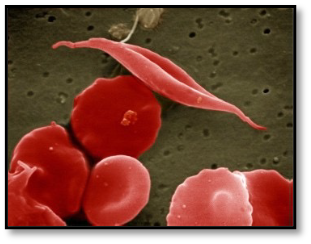August 7, 2024
NIBIB is presenting a biomedical technology showcase that demonstrates the breadth of innovative research supported by NIBIB. The interactive exhibits will expose congressional staff to cutting-edge research being conducted in laboratories and by NIBIB grantees. Descriptions of the demonstrations are below. The congressional staff visit is being conducted at the invitation of the American Institute for Medical and Biological Engineering (AIMBE).

Getting Under Your Skin: Deep-Penetration Acoustic Volumetric Printing
Junjie Yao, PhD, Associate Professor of Biomedical Engineering, Department of Biomedical Engineering
Nanchao Wang, PhD, Postdoctoral Associate, Department of Biomedical Engineering
Colton McGarraugh, Graduate Student, Department of Biomedical Engineering
Duke University, Durham, North Carolina
Yu Shrike Zhang, PhD, Associate Professor of Medicine and Associate Bioengineer
Xiao Kuang, PhD, Research Fellow
Harvard Medical School and Brigham and Women’s Hospital, Cambridge, Massachusetts
A collaborative NIBIB-supported team is developing a preclinical ultrasound method that has the potential to reshape surgical procedures, making them safer and less invasive. The technique combines a novel bioink with focused ultrasound to “print” 3D structures through solid tissues. By precisely controlling the focused ultrasound waves, the researchers can trigger the solidification of the bioink, creating intricate 3D objects at different depths and in a variety of different shapes. This advancement could lead to new possibilities in minimally invasive medical procedures, which the researchers will demonstrate.

The Interlock Screw
Alexandra Bisaccia, BS, Co-founder of Xander Medical
Jackson Bisaccia, BA, Co-founder of Xander Medical
Xander Medical, Burlington, Vermont
Ali Bisaccia won an NIH Design by Biomedical Undergraduate Teams (DEBUT) Challenge award in 2022 when she was an undergraduate student. Leveraging that experience, she co-founded Xander Medical with her brother, Jackson Bisaccia, with the goal of pioneering sustainable biotechnology products that focus on patient outcomes and safety. To learn more about commercialization, their company participated in NIBIB’s Concept to Clinic: Commercializing Innovation (C3i) program, a 24-week intensive course that helps medical device innovators translate their technologies from the lab (concept) to the market (clinic). Their technology, termed the “Interlock Screw,” addresses the complications and cost burdens associated with current methods of removing stripped and broken surgical screws without the utilization of screw extractor kits and/or compromising the biomaterial surrounding the hardware.

Mechanics and Tissue Remodeling Integrating Computational & Experimental Systems
Manu Platt, PhD, Director of BETA Center, Associate Director of DEIA and Senior Investigator, Section on MATRICES
Julia Frank, Post Baccalaureate IRTA Fellow - Section on MATRICES
National Institute of Biomedical Imaging and Bioengineering, NIH
The Section on Mechanics and Tissue Remodeling Integrating Computational & Experimental Systems (MATRICES) studies the transition of tissue from healthy to a diseased state and the underlying mechanisms driving disease progression. Of particular interest are enzymes known as proteases, which degrade extracellular matrices and other proteins. The MATRICES lab seeks to reveal opportunities for new diagnostics and therapeutics using enzymes as biomarkers for sickle cell disease, cancer metastasis, orthopedic diseases, and other conditions. This NIBIB lab also endeavors to create accessible technologies for use in low- and middle-income countries.

Fixing Broken Body Parts with Engineering and Immunology
Kaitlyn Sadtler, PhD, Investigator (tenure track), Section on Immunoengineering
National Institute of Biomedical Imaging and Bioengineering, NIH
Traumatic injury is the leading cause of death for people in the U.S. under the age of 44. Even if a patient survives the crucial first hours, the road to recovery is often long. One focus of the Section on Immunoengineering at NIBIB is to build back damaged tissues using biomaterials: like scaffolding in a house, biomaterials provide a structure on which tissue can grow. These materials can also provide cues for cells in the body to help prevent infection and develop the right tissues. Yet biomaterials can trigger damaging immune responses, such as inflammation or scar tissue, that can hinder or prevent wound healing. Researchers in this lab evaluate how bodies respond to injury and how biomaterials can be used to engineer better therapeutics for tissue regeneration.

Molecular-Mechanical Regulation in Cancer Biology
Alexander Cartagena-Rivera, PhD, Investigator (tenure track), Section on Mechanobiology
Andrew Massey, PhD, Postdoctoral Fellow, Section on Mechanobiology
Mazen Mezher, PhD, Postdoctoral Fellow, Section on Mechanobiology
National Institute of Biomedical Imaging and Bioengineering, NIH
Pancreatic cancer is one of the deadliest forms of cancer, expected to kill ~51,750 people in the United States in 2024 alone (estimated by cancer.org). The progression of pancreatic and other aggressive cancers utilizes a variety of migration modalities that critically depend on the local tumor microenvironment. The Section on Mechanobiology develops and applies advanced biophysical imaging techniques, such as atomic force microscopy (AFM), to study the cellular and tissue mechanics of tumor progression. By combining and developing cutting-edge biophysical toolboxes, these NIBIB researchers aim to understand key mechanical properties and molecular determinants that could be used for designing next-generation precision medicine therapeutic approaches.
